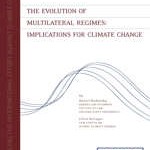
New Delhi – WWF-India’s work on conserving the highly endangered Gharial continued successfully with the reintroduction of 63 more Gharials in the River Ganga at Hastinapur Wildlife Sanctuary, Uttar Pradesh.
This Gharial Rehabilitation Initiative, which commenced last year is a part of an effort to establish a resident breeding population at a favourable location. Out of the previously released 131 Gharials, 41 have been recorded. The survey suggests that the previously reintroduced Gharials have acclimatized to the wild conditions implying that the new habitat is conducive to support a viable Gharial population in the River Ganga.
The recent batch that was introduced in the month of January comprised of 63 juvenile (12 male and 51 female) Gharials. Their size varied from 120-133 cms. and weight from 3-5 Kgs. approximately. These Gharials hatched in the Gharial Rehabilitation Center, Kukrail, Lucknow, and belonged to the 2007 batch. 102 juvenile and sub-adult Gharials have been recorded within the 184 Km. stretch from Valawali Village (Muzaffarnagr) to Anoopshahar (Bulandshahar). The Gharials released have been monitored and found to be receptive to their new habitat.
This reflects the success of the previous release, where WWF-India along with the UP State Forest Department reintroduced a total of 131 Gharials for the first time in January and February 2009 into the River Ganga at the Hastinapur Wildlife Sanctuary (HWLS), UP. The site was selected after a survey conducted by the State Forest Department officials and WWF-India. Intensive post-release monitoring was undertaken and it was observed that these Gharials had negotiated 10 kilometer downstream and 2.5 km upstream of the release site.
After the IUCN revised the status of the crocodilian species Gharial, Gavialis gangeticus, to ‘Critically Endangered’, it has become essential to address the conservation needs of this species. It is for this that WWF- India is trying to locate viable alternative habitats which supplement the extremely few habitats where the species currently occur. WWF- India has also been working in coordination with the local communities for their support and participation in this initiative. With rescue operations and regular monitoring, the regular reintroductions hope to conserve this endangered species.
Source: WWF-India.








